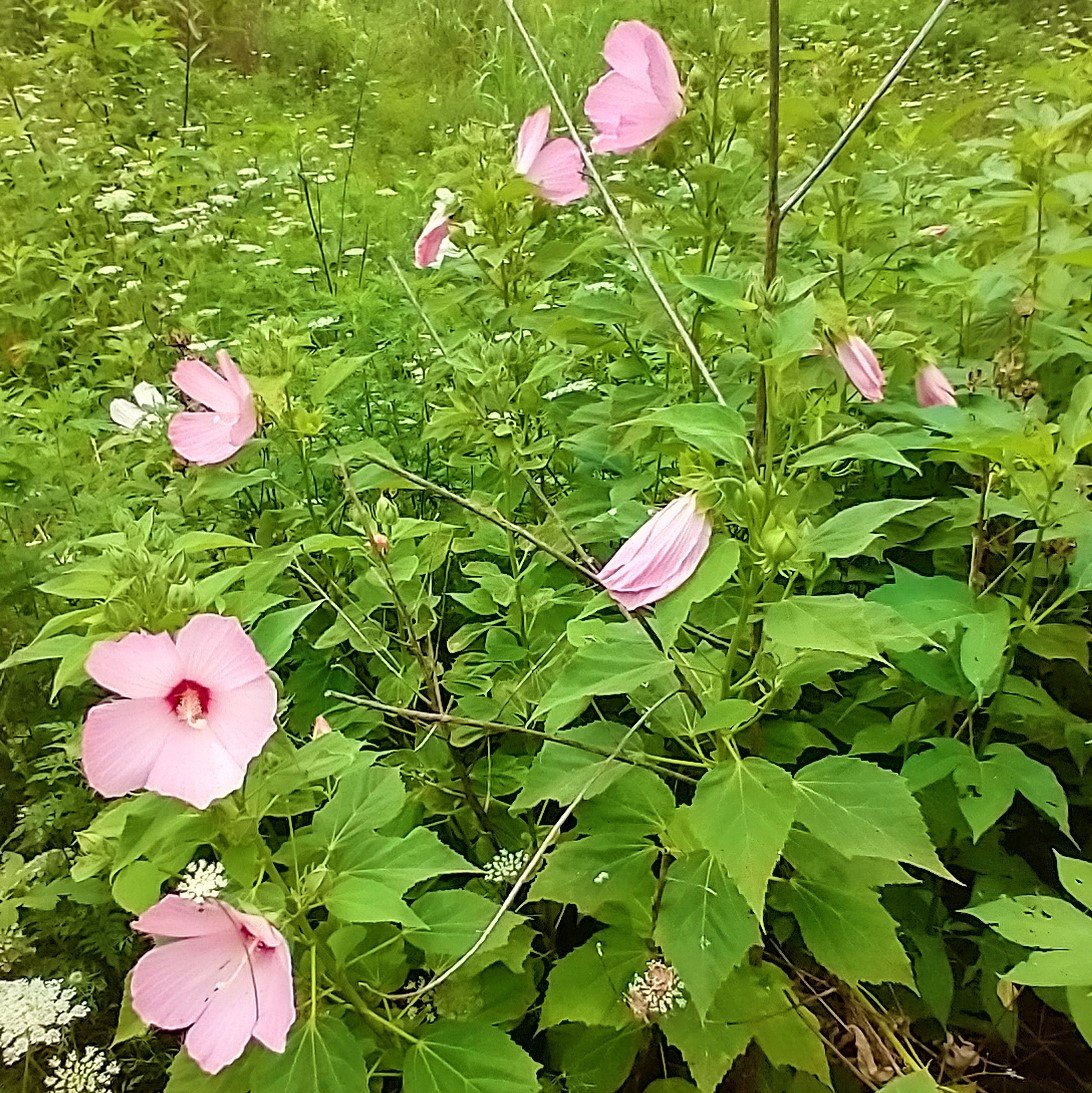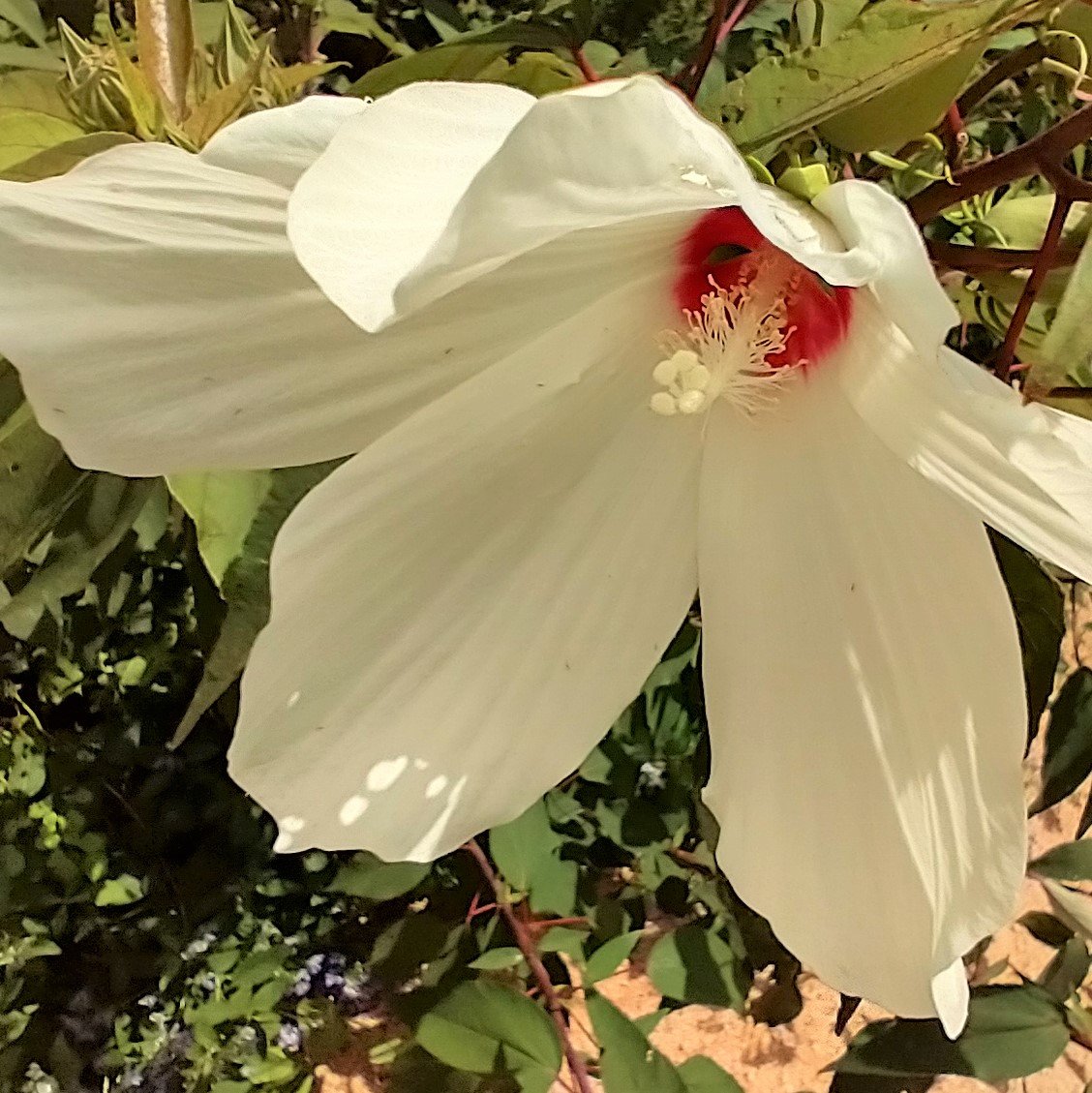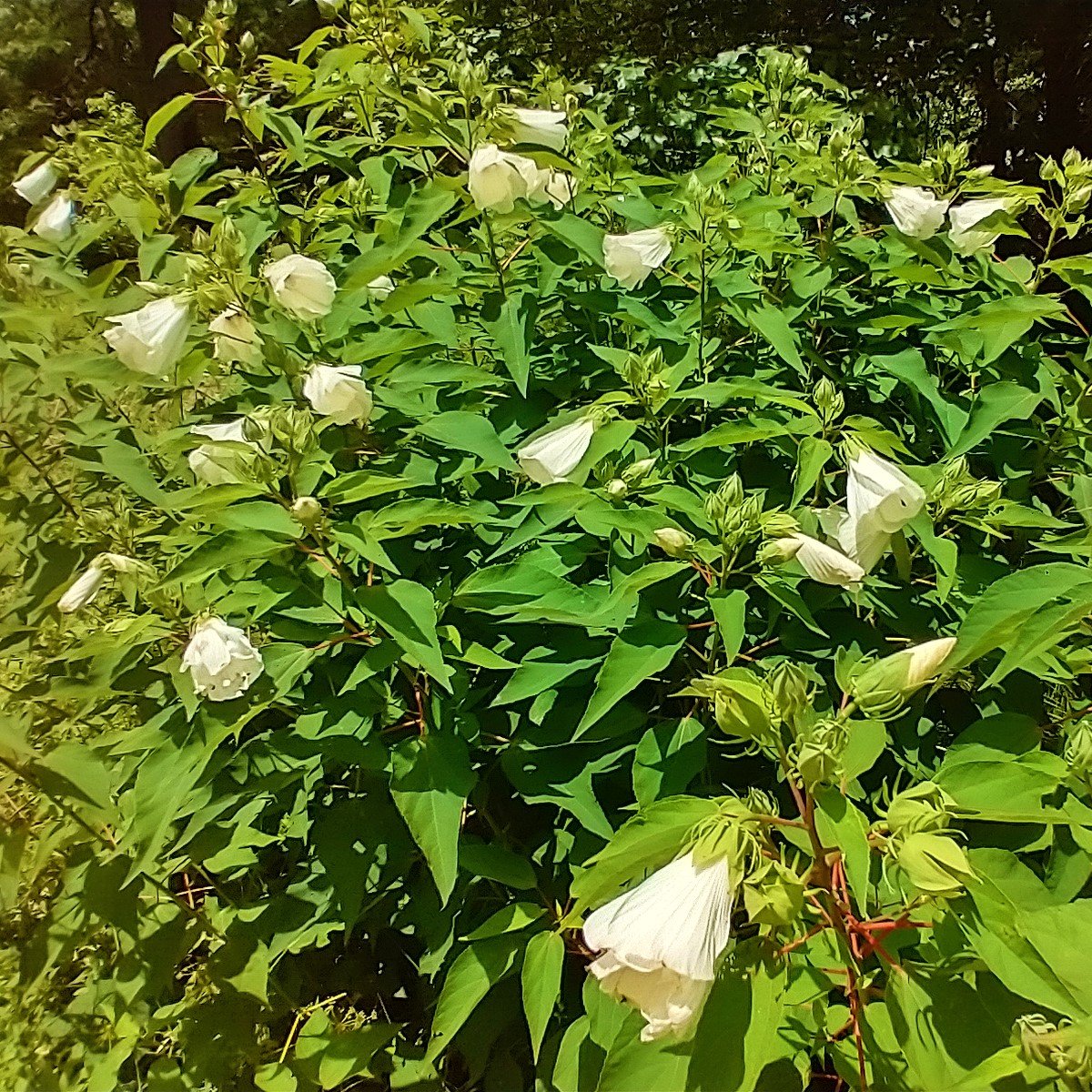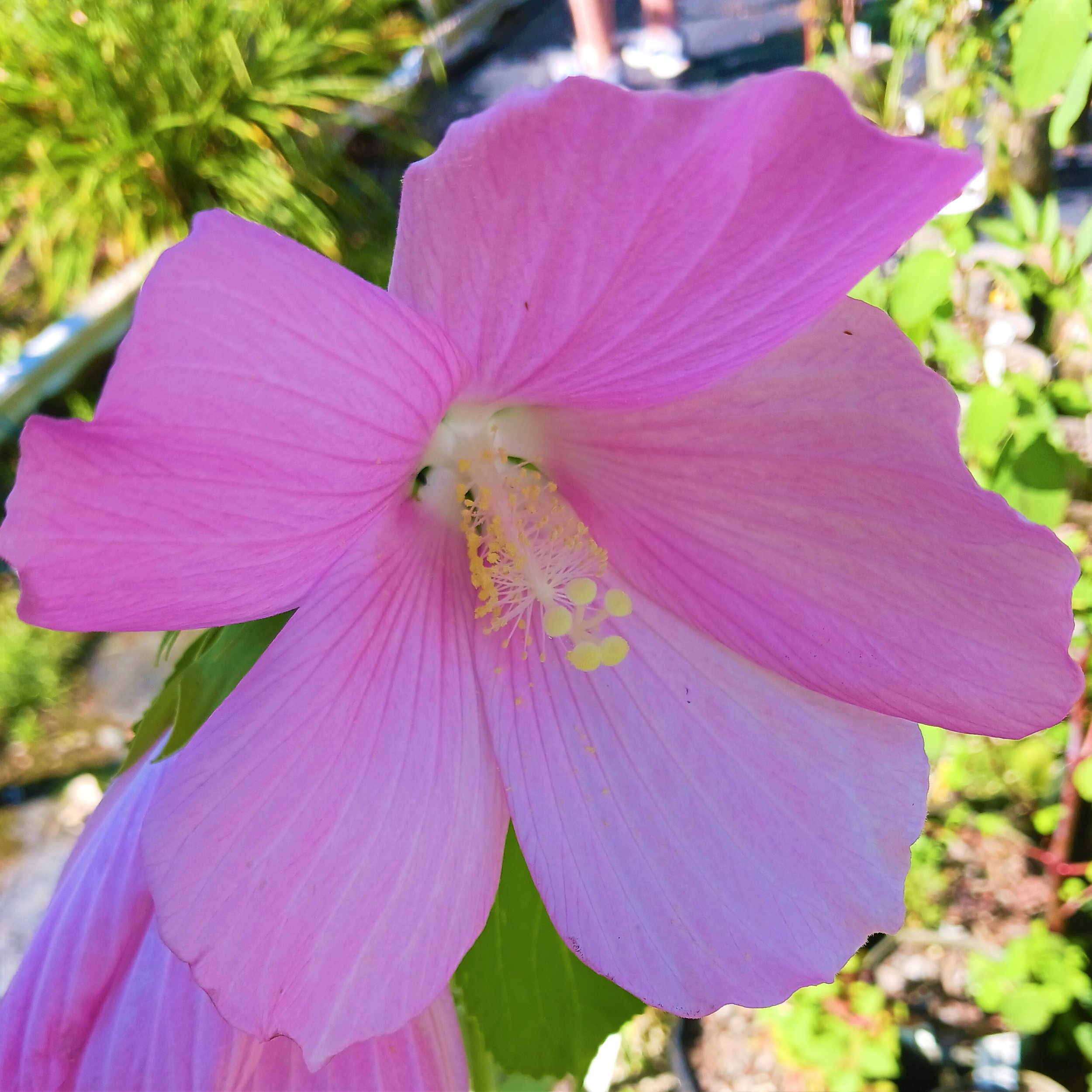NC Ecotype! Hibiscus moscheutos is a large perennial wildflower with vibrant flowers beginning in June. Each blossom only lasts a few days, but established plants will continue blooming into September. Since our plants are grown from wild-type seed, each plant will either bloom pink or white, typically with a crimson “eye” in the center. Hibiscus moscheutos prefers wet to moist soils, in full sun or some shade. It is hardy even in cold mountain valleys up to zone 5, but is very heat tolerant in coastal gardens as well. This species also tolerates salt runoff from winter roads or coastal breeze. It can grow to a large shrub size, up to 6’ height and 4’ width, but it is herbaceous and will die back after frost.
One major benefit of Hibiscus moscheutos is its value as an insect food source. The profuse vegetation is favored by a number of insect herbivores, including a number of moth species which only feed on leaves or buds of Hibiscus. It can also attract introduced pest species of moths, sawflies, and beetles, although most of these pests are host-specific and will not feed on other plants. This is one reason Hibiscus moscheutos can be a “buggy” plant, especially when grown in an area without an established local population. We do not recommend insecticides. For one, this can kill native specialists like the Rose-mallow Bee, which are beneficial to Hibiscus. Insecticides can also kill beneficial predators and parasitoids of the pest insects, exacerbating problems. We recommend allowing the Hibiscus to act as the natural food source and giving local predators like birds time to learn about your new feeder!
Pollinators: bumblebees, specialist bees
Host Plant for Butterflies/Moths: several dozen Lepidoptera species depending on region
Wildlife Value: Hummingbirds, Songbirds, Wood Warblers
Dependent Species: Rose-mallow Bee (Ptilothrix bombiformis), Exposed Bird-dropping Moth (Tarache aprica), Cotton moth (Alabama argillacea), Glossy Black Idia Moth (Idia lubricalis), Delightful Bird-dropping Moth (Tarache delecta), Chionodes hibiscella
Deer Resistance: Moderate
Native Region: Appalachian Mountains, Piedmont, Coastal Plain
Seed Origin: Tyrell County, NC
Ecoregion: 63 - Middle Atlantic Coastal Plain
USDA Zones: 5-8
States found in our region: AL, DE, GA, KY, MD, NC, PA, SC, TN, VA, WV
Other states found: AR, CA, CT, FL, IL, IN, KS, LA, MA, MI, MO, NH, NJ, NM, NY, OH, OK, RI, TX







